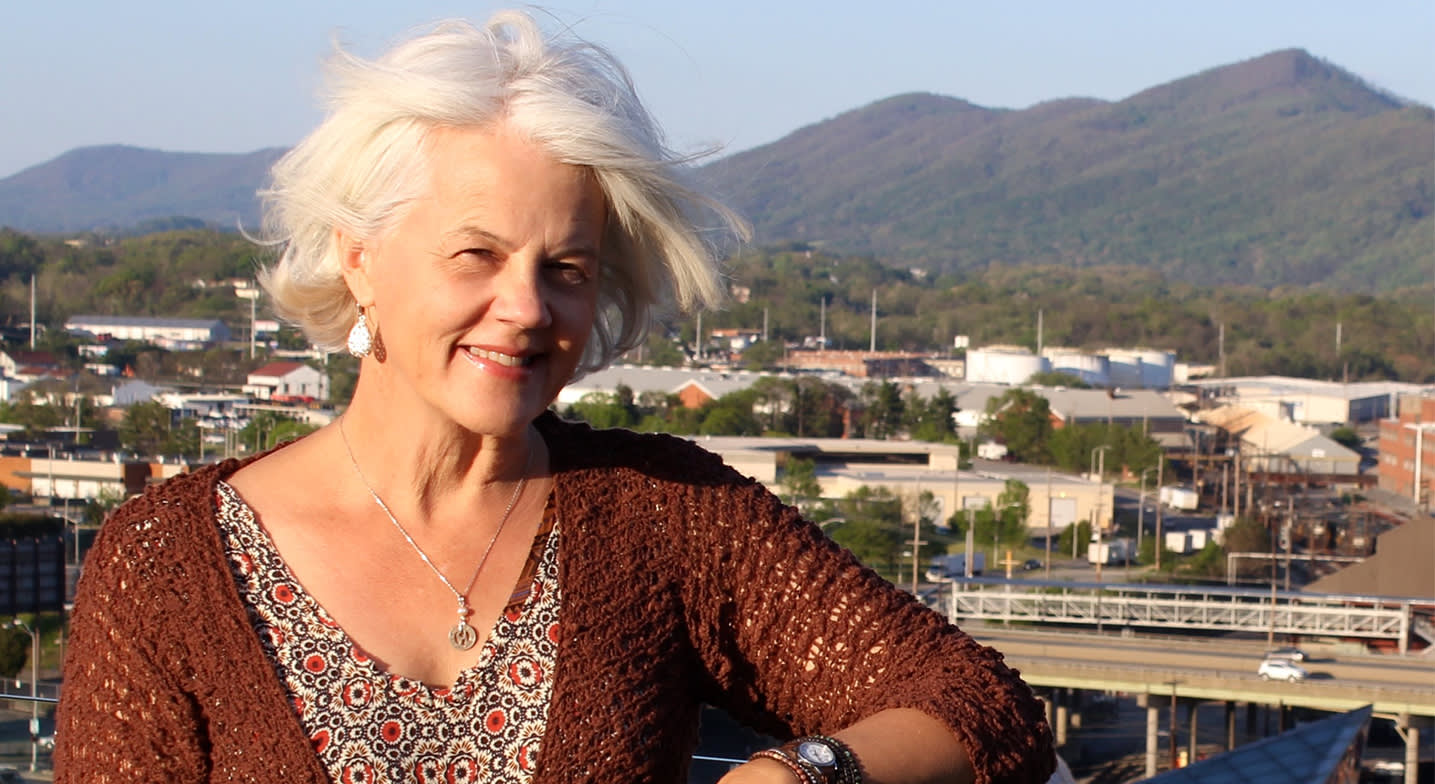Months after I finished my book, I could not get the voice of Tess Henry out of my head. One of the main sources for my 2018 nonfiction narrative, Dopesick: Dealers, Doctors, and the Drug Company That Addicted America, Tess was funny, whip smart, and truly tormented: She was a young woman struggling with a raging, five-year heroin addiction, and everywhere she turned for help, she was met with "closed doors, closed doors, closed doors," as her mother put it.
The initial ending of my book had already been edited and written in late 2017 when we learned that Tess was murdered on Christmas Eve--her body was found at the bottom of a dumpster. The scene was the perfect metaphor for America's response to its opioid crisis: the girl next door with the shy smile and the poetry collection found discarded among the trash.
The murder took place in Las Vegas, where Tess had been sent for rehab several months before. And though I quickly rewrote my book's epilogue, that revision came nowhere close to examining the reality of a young mom from the Virginia suburbs left to fend for herself on the gritty streets of Sin City.
As we later learned, Tess had been sleeping in the corners of casinos and in an abandoned minivan with a pimp. And that was only a fraction of the story.
Four months after Tess's death, her mother, Patricia Mehrmann, and I left our homes in Roanoke, Virginia and decided to figure out the rest of the story. With Audible producer Emily Martinez, we set out to retrace Tess's final steps on the other side of the country.
There are scant journalistic guidelines for what to do when your main subject in a book is brutally murdered.
We hoped that our forthcoming audio documentary, Finding Tess: A Mother's Search for Answers in a Dopesick America, would help Tess's mom find some measure of closure on her daughter's death. We also hoped the people we met might be able to help Las Vegas Metropolitan Police Department detectives unearth new clues about the brutal murder.
Our quest became a kind of psychosocial autopsy: If we could figure out what happened to Tess, maybe we could illuminate why America remains a place where it's easier to get access to opioids than it is to find treatment for the 2.6 million Americans addicted to them. Maybe Tess's story would even inspire real change.
With the benefit of hindsight (and many helpers along the way), we pinpointed where Tess had fallen through the cracks of our nation's patchwork addiction treatment system. From the first time I interviewed Tess in late 2015, she knew what she needed: consistent access to medication-assisted treatment (MAT) with wraparound services like counseling, transportation, and housing. But stigma, byzantine treatment barriers, and the mistaken notion that MAT was simply "replacing a drug with another drug" kept getting in her way.
And nobody--myself included--was in the habit of really listening to those who knew the most about the issue: people with opioid use disorder.
This was especially clear as Emily and I went back and re-listened to Tess's story in her own words. I had recorded all my interviews on my iPhone, not knowing then that Audible listeners would become privy to sounds of Tess's cooing baby and her funny asides, along with her copious frustrations with judges, hospital workers and recovery advocates who failed to consider the overwhelming scientific evidence that MAT is an opioid-addicted person's best shot at recovering and thriving.
In Las Vegas, Emily, Patricia and I met a polyphonic cast of characters who helped us piece together Tess's final months. Audible listeners will hear them outside the 12-step meetings that Tess attended, in the homeless encampments and underground tunnels where she walked, in the voices of recovering women who now help other addicted sex workers try to escape lives of drug and sex trafficking, in the puzzled frustrations of police detectives, in the heroic handful of friends who tried to help Tess, and in the words of the traumatized man who stumbled upon Tess's body on Christmas Eve.
They'll hear me, too, attempt the precarious dance of reporting both accurately and humanely on people in crisis. At least one critic accused me of getting "too close for comfort" to Tess and her mother in Dopesick, but for the record: There are scant journalistic guidelines for what to do when your main subject in a book is brutally murdered.
What did I do? I put down my notebook, and I did what I would do for any friend in mourning: I showed up. I made her mother soup. And, with my notebook and iPhone obviously in hand, I kept showing up any time Patricia asked--whether she needed a ride to view her daughter's body at the funeral home or wanted me to fly to Las Vegas with her months later (at my own expense), not knowing then whether it would result in a follow-up project or a story.
To do good journalism, I have often written and said, you must be transparent with your sources, and always, always be a human being first. What you're after, above all, is to get as close to the raw truth as possible, and it's possible--essential, actually--to be truthful without being robotic. As the great Equal Justice Initiative founder Bryan Stevenson explains in Just Mercy: It's impossible to understand important things from a distance. "You have to get close."
Among my favorite things about working on Finding Tess--especially after writing three books, essentially at home, typing away with only my dogs on the floor next to me--was having a full-time colleague like Emily to help me strategize. Though she's half my age and specializes in audio storytelling, she was the perfect collaborator: open and resourceful, and as tough as she is kind.
Emily pushed me to interview reluctant sources. And she taught me to shut up while I did--a challenge for someone who's worked in print for more than three decades, accustomed to hmm-hmming and interrupting interviewees with way too many follow-up questions.
She and our editor, Collin Campbell, pushed me to write for the ear more than the eye. (Avoid compound sentences. When you find yourself using dashes to insert phrases, restructure the sentence to keep it simple and aurally digestible.)
In audio, the tape leads the way. I had never noticed this before as a listener, but with audio stories, interviewees typically talk for longer stretches than they do in books and articles because hearing the ums and false starts and the all-too-human stammers and regional accents helps build character and tone. So does hearing Tess click her baby into his car seat, or hearing Patricia's wind chimes eerily match Tess's mood.
Among my favorite moments in the project is when Emily and I ask the dynamo addiction-medicine doctor Jennifer Wells to talk about her frustrations with people who stigmatize MAT users. Wells answers by letting out a colossal, four-seconds-long sigh.
That sigh contained multitudes. You could feel within that sigh the sighs of mothers and sons, of grieving children and friends. The un-sighed sighs of the 400,000 Americans who, like Tess, are no longer around to tell us their stories.
"I'm exhausted, just saying it again and again," Wells says. Then she reconsiders: "Not really. I'll go on forever."
Now that I've spent the better part of seven years reporting on the opioid crisis, I feel the same way. Like my journalistic hero, the reporter and author Sonia Nazario, I feel it's not just my right to opine, as I do in Finding Tess, my belief that "the bias against MAT is the number one barrier to turning the opioid crisis back." It's actually my responsibility to say such things.
Too many people have died for journalists like me to continue mincing words.
As Tess Henry told me the first time we met, "We need urgent care for the addicted."
In Finding Tess, we hear those words play out, in word and deed, as we see the kind of urgent care Tess could only dream of start to come to fruition, in her own hometown and elsewhere. We see it beginning to play out in churches and schools, in police departments, and in hospital ERs.
As the companies that fueled the opioid crisis begin to be held to account in courtrooms across America, it's important to listen to people like Tess, to hear from those who were addicted initially through no fault of their own but rather at the manipulative hands of greed-fueled executives.
Only then will Americans replace ignorance and stigma with understanding. Only then will they begin to replace their own sighs not just with empathy but also with action.







